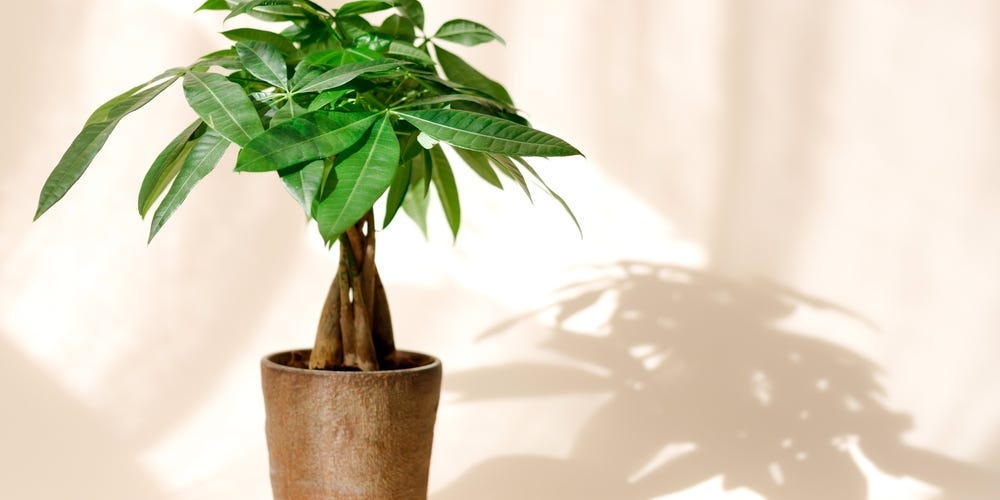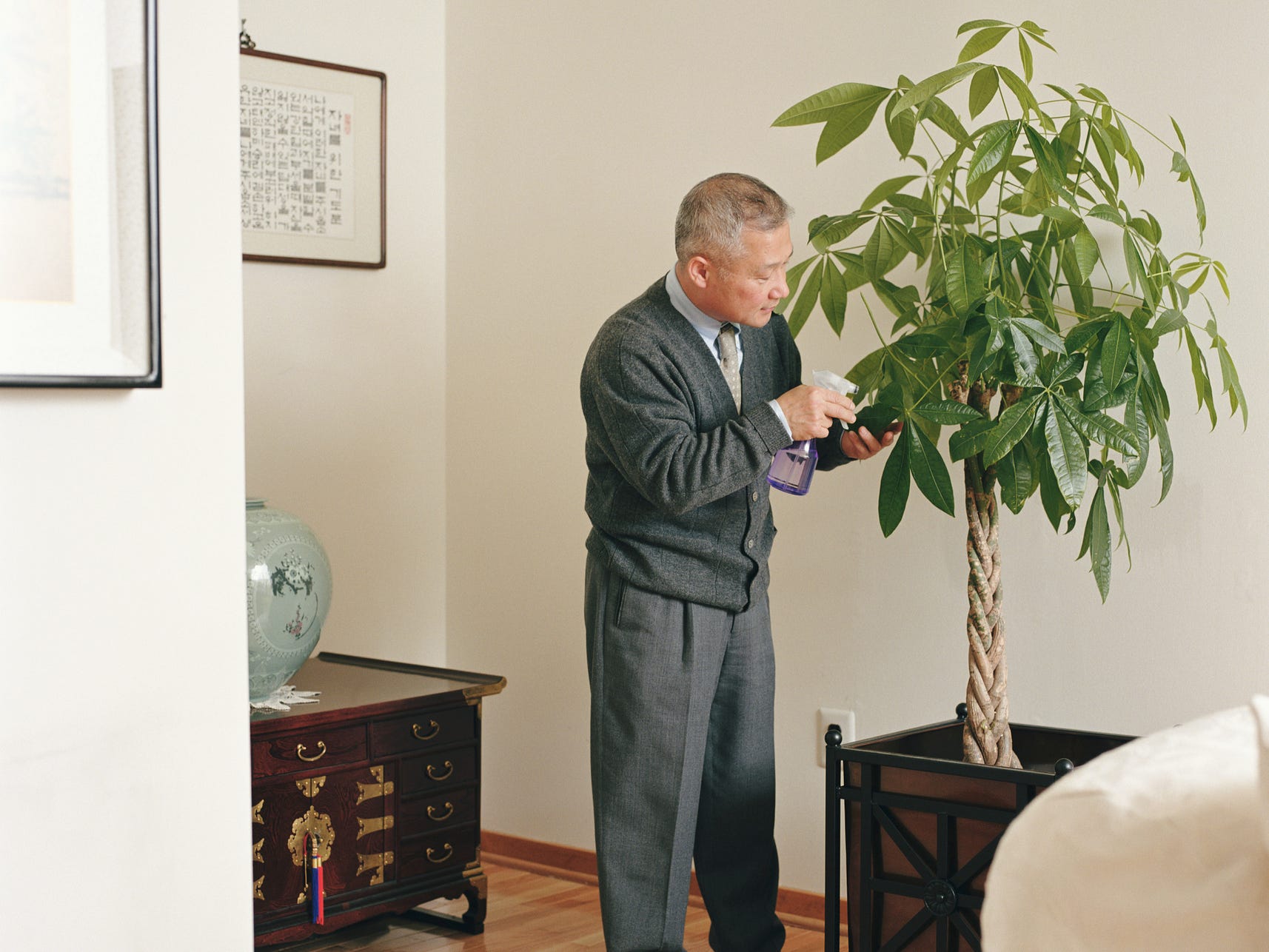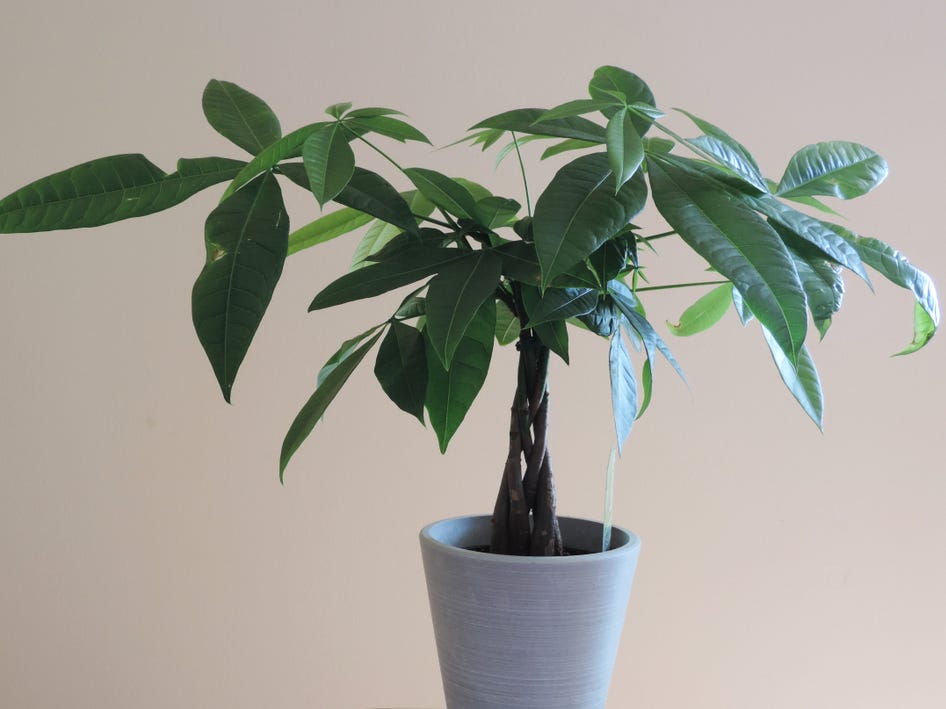
Lifesummerlin/Shutterstock
- Money trees are popular in feng shui because they represent the practice's five elements.
- As houseplants, money trees have braided trunks that do not occur in their natural habitat.
- This houseplant has long been said to bring good luck and fortune, according to lore.
- Visit Insider's Home & Kitchen Reference library for more stories.
You might think of feng shui, the ancient Chinese practice and philosophy of arranging pieces in a living space to bring harmony and balance, as only relating to furniture. Plants, however, are essential to feng shui practitioners for bringing in a connection to the natural world.
One of the most popular plants used in feng shui is the charming money tree, which represents the five elements of feng shui – wood, water, fire, metal, and earth. It is also a symbol of good luck and fortune for many, making it the perfect housewarming gift.
While money trees are a tropical tree native to Central and South America, they have been popularized throughout East and Southeast Asia. Erin Marino, editorial lead and plant expert at The Sill, shares her best care tips so any money tree can keep ushering in good luck and fortune.
Identifying a money tree
Money trees can be easily identified by their long, palm-like leaves and distinct braided trunk. While their interlaced trunks may seem like a naturally occurring feature, money trees with braided trunks were woven this way by farmers or gardeners in their young form due to their pliable stems by braiding three or more separate stems into one money tree.
"In their native habitat, the trunks of money trees are not braided," says Marino. "This is something that's become the norm over time for these plants when sold as houseplants. Some suggest it's meant to 'lock in' the good fortune of the plant."
Two species of the money tree are the most popular: Pachira aquatica and Pachira glabra. While P. aquatica is used as the umbrella species name for both species of money trees, P. glabra grows in lowland rainforests and bloom flowers with white stamens, while P. aquatica grows in coastal estuaries and bloom flowers with red stamens.
"Both plants are aesthetically similar when cultivated as houseplants and their scientific names are synonymous with the common name 'money tree,'" says Marino.
Water

Sean Justice/Getty Images
Despite their tropical origins, money trees can be sensitive to overwatering and overly moist soil. To maintain consistency, Marino recommends keeping a humidifier around a money tree or gently misting them weekly.
"The best watering schedule for your money tree is every one to two weeks, allowing the soil to dry out between waterings," says Marino. "Expect to water more often in brighter light, and less often in lower light."
Potting and fertilizer
While Marino says that most indoor potting soils will work for money trees, one with adequate drainage, like a sandy succulent mix, is preferred for this plant.
As for fertilizer, money trees can be fed about once a month in the growing seasons of spring and summer with a water-soluble fertilizer diluted to half-strength, following the instructions on the fertilizer's label.
Temperature and light
To replicate the warm, tropical environment of the money tree, it is best to give it plenty of consistent lighting, rotating it weekly for all leaves to get the same amount of sunlight.
"Money trees thrive in bright indirect to medium light indoors. It prefers temperatures between 65 and 80 degrees Fahrenheit - on the warmer end is ideal," says Marino. "Keep away from cold and hot drafts, like AC units, heaters, or open windows and doors."
Common problems

NeginMinaee/Shutterstock
Like most indoor houseplants, money trees may fall victim to typical problems such as overwatering and underwatering. Marino suggests looking out for leaf drop, which usually means not enough sunlight or water; yellow leaves and/or black stems, which usually means overwatering; and curling leaves and/or extra dry soil, which usually means underwatering.
"As for pests and diseases, money trees are susceptible to most common plant pests," says Marino. "Most, if caught early on, can be treated with neem oil or an insecticide."
Propagation
Propagating a money plant can be done through a simple cutting process. To begin, Marino instructs to take a healthy cutting from the bottom part of the plant that has multiple leaves and nodes (points of attachment that look like small bumps), which will be where new roots will begin.
Next, Marino recommends dipping the bottom of the cutting in a rooting hormone chemical to promote root development, but only the section that will be planted, and then stick it into a fresh, pre-moistened potting mix.
Lastly, secure the plant in fresh potting soil in a new pot by patting down around the base. Keep it in a warm spot, with indirect bright to medium light, and water when dry.
Insider's takeaway
For a money tree to stay healthy and thriving, it's important to monitor the watering schedule and prevent overwatering, while also keeping it in a brightly lit area with well-draining soil. With this simple care routine, this hardy houseplant can reward anyone with years of good luck, good fortune, and positive energy.